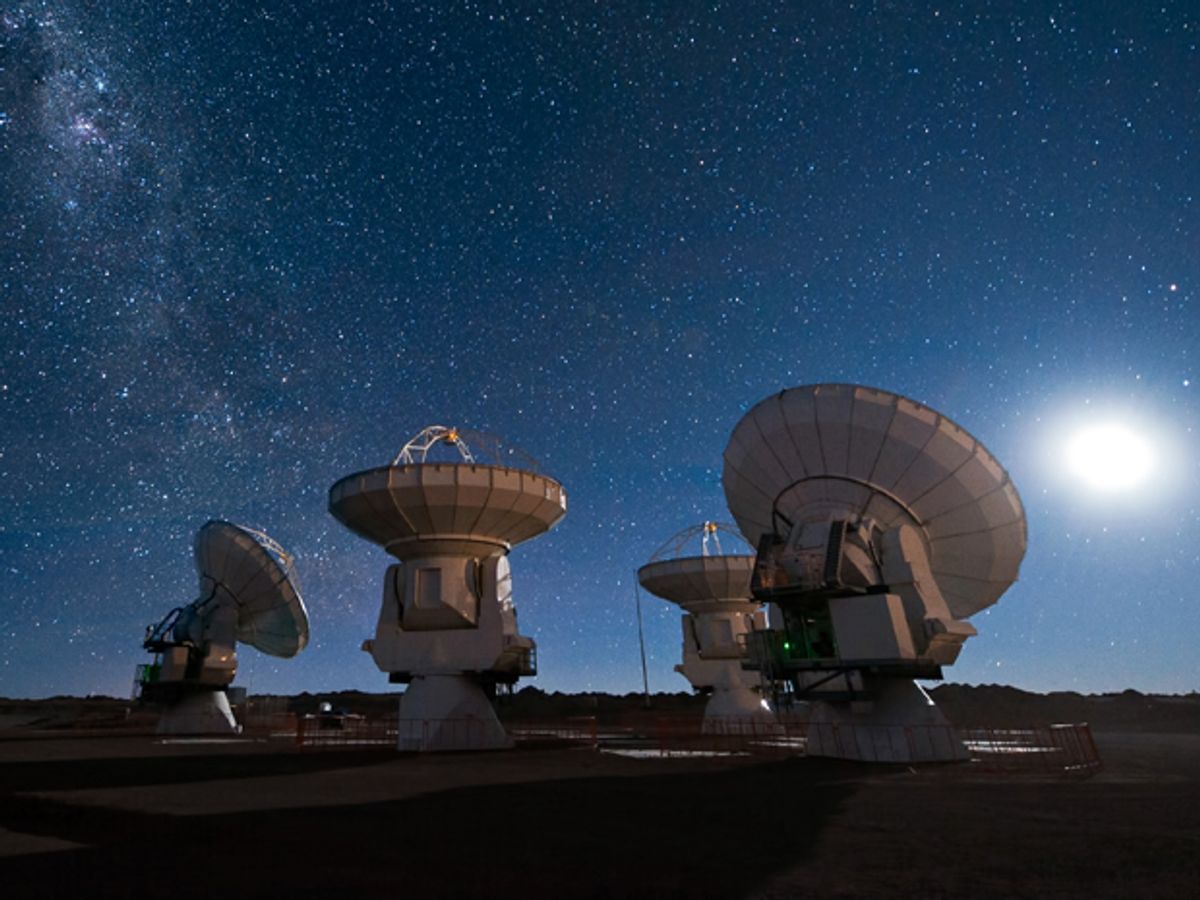
A vibrating membrane can detect weak radio signals and convert them directly into light, says a group of Danish researchers, possibly leading to more-sensitive radio telescopes, smaller MRI machines, and perhaps quantum networks.
The team built its device by replacing one plate of a capacitor with a thin sheet of silicon nitride, giving it a reflective coating, and bouncing a laser beam off the vibrating sheet. “It’s kind of a relatively straightforward idea,” says Eugene Polzik, professor of physics at the University of Copenhagen’s Niels Bohr Institute. “In hindsight, of course.”
The device starts with an LC circuit—an electronic resonator composed of an inductor (L), which acts as an antenna for signals at microwave frequencies, and a capacitor (C). The researchers, from the University of Copenhagen, the Technical University of Denmark, and the Joint Quantum Institute at the University of Maryland, describe the device in last week’s issue of Nature.

In any such setup, the signals detected by the antenna cause oscillations of current in the circuit, which in turn exerts a mechanical force on the capacitor. “In a normal capacitor, this force is completely irrelevant and very small,” Polzik explains. But the team made its capacitor more sensitive to the force by replacing one of its plates with a flexible sheet of silicon nitride about 100 nanometers thick, creating, in essence, a tiny woofer. They coated one side of the membrane with a 50-nm-thick layer of aluminum, turning it into a mirror. When the researchers bounced a laser beam off the metal, they could measure shifts in the reflected light caused by the membrane’s movement. Not only does that allow them to detect a weak signal, it also means the radio waves can easily be converted into light that can be transmitted along a fiber-optic cable for easy communication.
The device is sensitive to weak signals because sources of noise that would ordinarily drown out the signal are even weaker. The main source of noise is motion in the membrane caused by heat; at room temperature, the noise temperature is 300 kelvins. In existing detectors, the noise caused by heat in electronic components is lowered by cooling them to the temperature of liquid helium—4 K. The researchers took a different approach with this device, applying an external DC voltage to the membrane that strongly enhanced coupling to the incoming signal. Oscillations from the electric current thereby dominated over the temperature of the environment and effectively lowered the noise temperature of the device to between 5 and 10 K.
“This is what you get when you pour liquid helium onto the device, and we have it at room temperature,” Polzik says.
He says he can bring that effective temperature down even further by shrinking that gap between the membrane and the opposite plate of the capacitor, which is currently about 1 micrometer. Polzik says that this is an engineering challenge but not impossible. He’d also like to make the opposite plate into a mirror as well, creating an optical cavity inside the capacitor, which would allow light to bounce back and forth and amplify the signal.
“We are confident we can reduce the noise temperature to less than 1 K,” he says. Since the microwave background radiation—the echo of the big bang that tells astronomers a lot about the structure of the universe—is about 2 K, such a receiver would easily pick that up. Polzik says his device might also be useful for the Square Kilometre Array, a large radio telescope installation being built in Australia and South Africa.
The membrane has a resonant frequency of approximately 1 megahertz, so that’s the frequency of the signal it detects. But Polzik says it should be possible to increase that to hundreds of megahertz, or even a gigahertz, by applying an AC bias voltage to the membrane. The necessary voltage would have the frequency equal to the difference between the resonant frequency of the membrane and the frequency the team is trying to receive.
Polzik thinks the device could prove practical in a relatively short time. “It’s a room-temperature device, and therefore we believe it can be applicable in today’s real-life applications,” he says. For instance, it might replace the cryogenic signal amplifiers in an MRI machine. The machines are bulky and costly, partly because they have to hold liquid helium chambers to cool the amplifiers, which his device wouldn’t require.
Mika Sillanpää, a physicist at Aalto University, in Finland, wrote a commentary in Nature to accompany the paper and agrees that the near-term use of the device will be as a low-noise amplifier. Longer term, he thinks it’s promising for quantum computing. The device can convert electrical signals into optical ones while preserving information about the quantum state of the electrons, thus providing a reliable way to move quantum information between processors, even over networks. “The work creates a hybrid physical system that has potential to function in the quantum-mechanical limit,” Sillanpää says. “The possible applications in ‘quantum Internet’ are so far away, it is too early to predict much.”
About the Author
Neil Savage, based in Lowell, Mass., writes about strange semiconductors, unusual optoelectronics, and other things. In the November 2013 issue he reported on the progress toward the most powerful MRI machine in the world.
Neil Savage is a freelance science and technology writer based in Lowell, Mass., and a frequent contributor to IEEE Spectrum. His topics of interest include photonics, physics, computing, materials science, and semiconductors. His most recent article, “Tiny Satellites Could Distribute Quantum Keys,” describes an experiment in which cryptographic keys were distributed from satellites released from the International Space Station. He serves on the steering committee of New England Science Writers.



